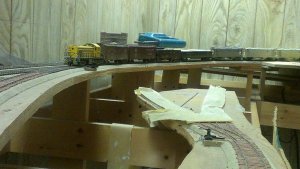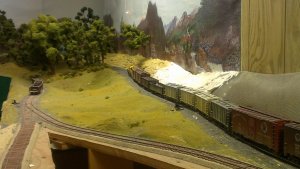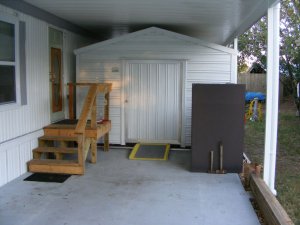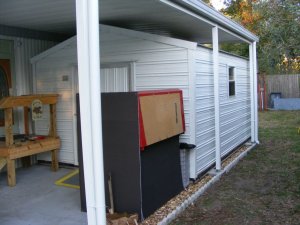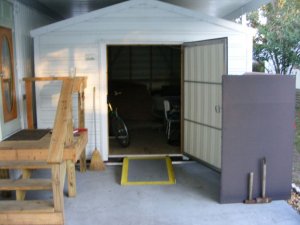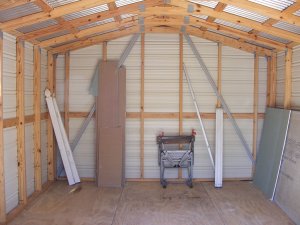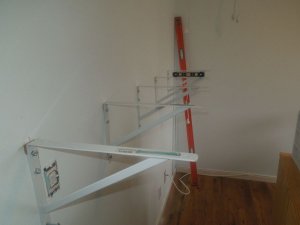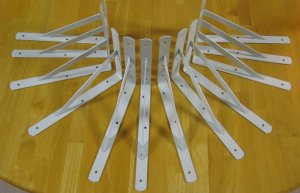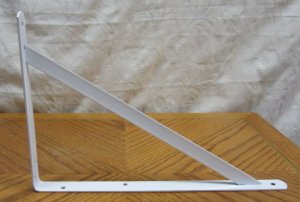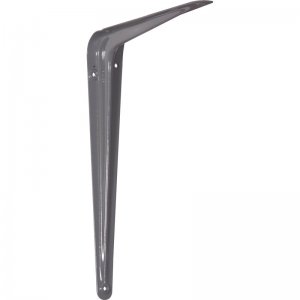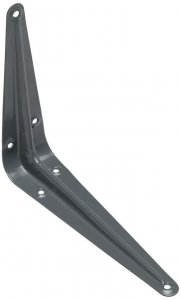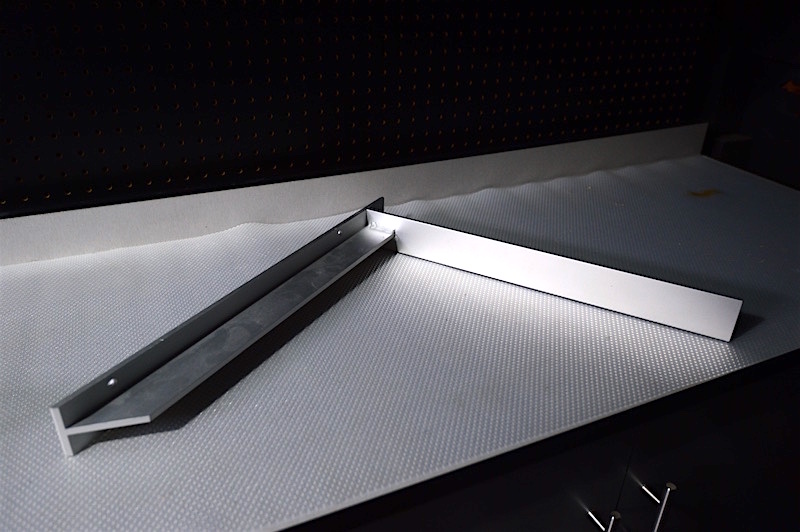...another couple of quotes...
Did you gap the track when you installed it? A business card to credit card space should be left between any segments of track longer than about a foot. This allows for the expansion and contraction of the metal rails.
Also, Your benchwork is an excellent example of why going with the cheapest materials available is not always the best idea. 2x4's can and do twist, warp, stretch and shrink. Likewise OSB loves moisture and will develop sags over time. Now this is somewhat fixable with additional bracing and possibly an extra set of legs in the middle of the table if you don't already have a set there but realistically If you are going to use dimensional lumber pay the couple extra bucks and get Clear pine or if it's available popular. That said it is just as affordable to purchase one sheet of 3/4 birch plywood and build your benchwork frame with that. (FYI plywood works out to about 50 cents a foot for 3.5 inch wide strips) As for a plywood surface, any actual plywood will do the trick but the better quality it is the easier it is to work with. Stay away from MDF and OSB due to long term sagging issues.
OnDrew
The real problem is the OSB. It’s cheap and not very strong. My last layout had Homosote and I never had issues. I used 3/4 plywood (a little over kill) ripped to 3" wide stripes. Than I assembled it into modules using Gorilla Glue and brad nails to hold it until the glue dried. The 1/2" Homosote was glued and screwed to the 3/4" top. After the glue was dry I removed the screws and filled in all of the holes and seams with sheetrock mud. Sanded it when dry and then painted it with latex paint. All of the bench work was painted flat black. The layout was in a basement that had poured concrete walls. No issues with any moisture in all seasons.
My track was spiked down. I trimmed the spike heads off every 5th tie on the outside of the flex track. Then drilled holes for the spikes. When it was laid I would spike every 10th tie leaving room for any adjustments. No gaps between ends of rails. Soldered feeders every other section to flex. Also I let the movable rail keep moving and adjusted my rail joiners as needed. Just trimmed of the tie plate and spike. So all rail joints ended up being staggered.
I ended up tearing it down and moving. I would build it the same way but with 1/2" cabinet grade (7 ply Baltic Birch) plywood and Homosote spline for the roadbed cut to 2" wide strips and screwed together. Will paint benchwork and roadbed as I go.
Randy Doman

